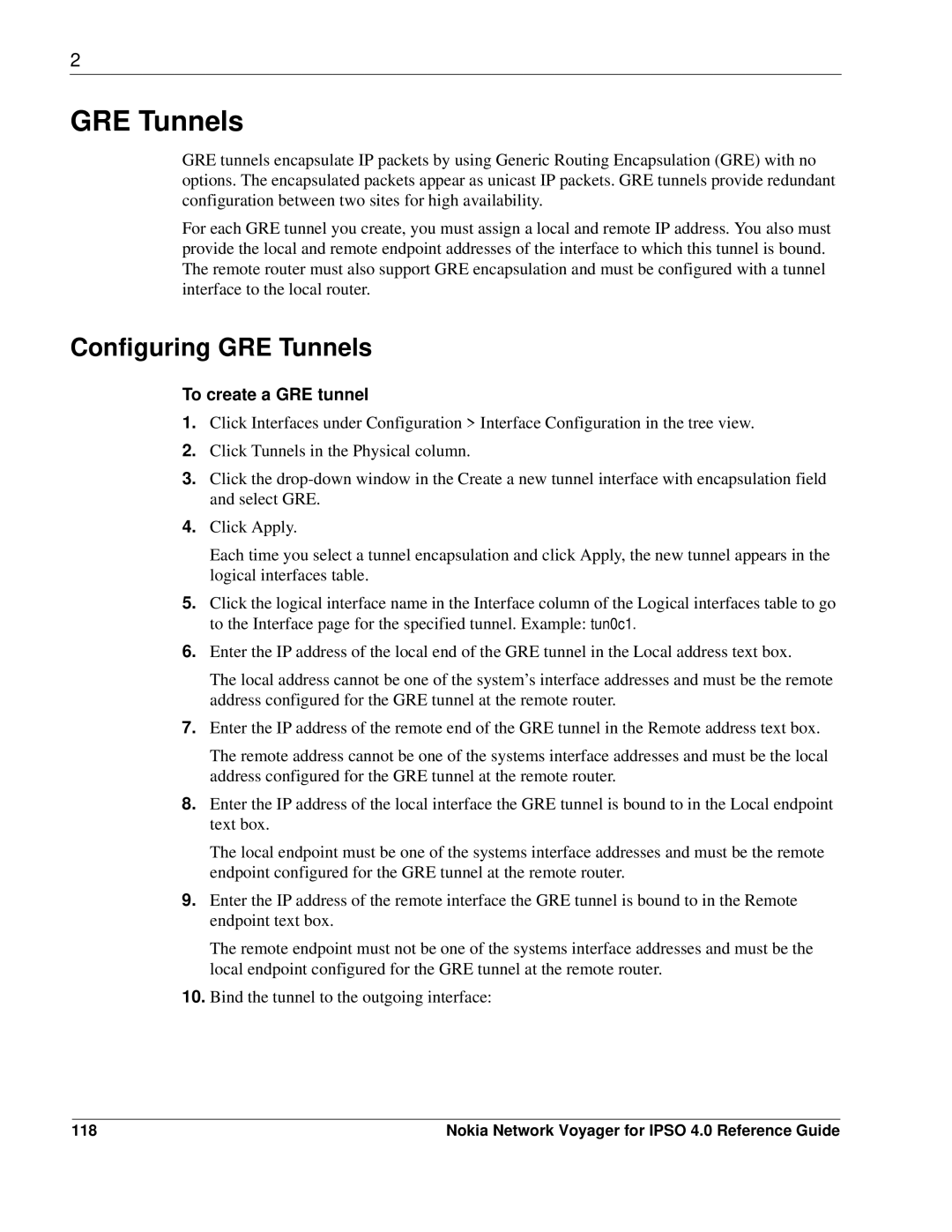
2
GRE Tunnels
GRE tunnels encapsulate IP packets by using Generic Routing Encapsulation (GRE) with no options. The encapsulated packets appear as unicast IP packets. GRE tunnels provide redundant configuration between two sites for high availability.
For each GRE tunnel you create, you must assign a local and remote IP address. You also must provide the local and remote endpoint addresses of the interface to which this tunnel is bound. The remote router must also support GRE encapsulation and must be configured with a tunnel interface to the local router.
Configuring GRE Tunnels
To create a GRE tunnel
1.Click Interfaces under Configuration > Interface Configuration in the tree view.
2.Click Tunnels in the Physical column.
3.Click the
4.Click Apply.
Each time you select a tunnel encapsulation and click Apply, the new tunnel appears in the logical interfaces table.
5.Click the logical interface name in the Interface column of the Logical interfaces table to go to the Interface page for the specified tunnel. Example: tun0c1.
6.Enter the IP address of the local end of the GRE tunnel in the Local address text box.
The local address cannot be one of the system’s interface addresses and must be the remote address configured for the GRE tunnel at the remote router.
7.Enter the IP address of the remote end of the GRE tunnel in the Remote address text box.
The remote address cannot be one of the systems interface addresses and must be the local address configured for the GRE tunnel at the remote router.
8.Enter the IP address of the local interface the GRE tunnel is bound to in the Local endpoint text box.
The local endpoint must be one of the systems interface addresses and must be the remote endpoint configured for the GRE tunnel at the remote router.
9.Enter the IP address of the remote interface the GRE tunnel is bound to in the Remote endpoint text box.
The remote endpoint must not be one of the systems interface addresses and must be the local endpoint configured for the GRE tunnel at the remote router.
10.Bind the tunnel to the outgoing interface:
118 | Nokia Network Voyager for IPSO 4.0 Reference Guide |
